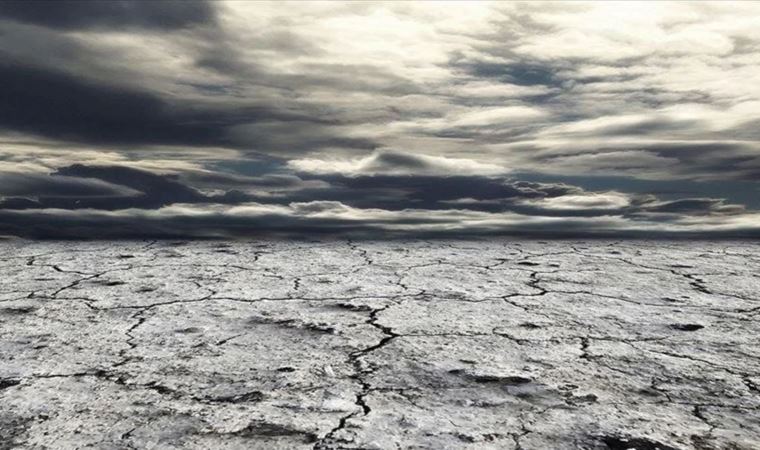World temperatures set to reach new records in next 5 years, says UN body
Greenhouse gases, El Nino event likely to fuel increase, says World Meteorological Organization report.

Global temperatures will likely surge to record levels in the next five years, the World Meteorological Organization (WMO) warned Wednesday.
Fueled by accumulating greenhouse gases and naturally higher temperatures in the Pacific, known as an El Nino event, the WMO said in its latest report that there was a 66% likelihood that the annual average near-surface global temperature in 2023-2027 would be more than 1.5 C (34.7 F) above pre-industrial levels for at least a year.
It also said there was a 98% likelihood that at least one of the next five years, and the five-year period as a whole, would be the warmest on record.
"This report does not mean that we will permanently exceed the 1.5 C level specified in the Paris Agreement, which refers to long-term warming over many years," said WMO Secretary-General Petteri Taalas.
However, the WMO is sounding the alarm that the world will temporarily breach the 1.5°C level with increasing frequency, he said.
The 2016 Paris Agreement sets long-term goals to cut greenhouse emissions and limit the global temperature rise in this century to 2 C, while pursuing efforts to cap it even further to 1.5 C, to avoid or reduce adverse the impacts and related losses and damages of climate change.
He said that an El Nino climate event was expected to develop in the coming months and that this would combine with human-induced climate change to push global temperatures "into uncharted territory."
That development will have far-reaching impacts on health, food security, water management, and the environment.
"We need to be prepared," said Taalas.
There is only a 32% chance the five-year mean temperatures will exceed the 1.5 C threshold, according to the Global Annual to Decadal Climate Update, produced by the UK's Met Office, the WMO lead center for such predictions.
The chance of a temporary rise exceeding 1.5 C has steadily increased since 2015, when the average was close to zero.
It 2017-2021, there was a 10% chance of exceeding that threshold.
"Global mean temperatures are predicted to continue increasing, moving us away further and further away from the climate we are used to," said Leon Hermanson, a Met Office scientist who led the report.
ABOVE AVERAGE
Global temperatures last year were about 1.15 C above the 1850-1900 average.
The cooling influence of La Nina conditions over the past three years temporarily reined in the longer-term warming trend.
But La Nina ended in March, and an El Nino is forecast to develop in the coming months.
Typically, El Nino increases global temperatures in the year after it develops, which would be 2024.
The annual mean global near-surface temperature for each year between 2023 and 2027 is predicted to be between 1.1 C and 1.8 C, higher than the 1850-1900 average.
The measurement is used as a baseline because it was before the emission of greenhouse gases from human and industrial activities.
There is a 98% chance of at least one in the next five years beating the temperature record set in 2016 when there was a powerful El Nino.
The chance of the five-year mean for 2023-2027 being higher than the last five years is also 98%.
ARCTIC WARMING
Arctic warming is disproportionately high, says the WMO report.
Compared to the 1991-2020 average, the temperature anomaly is predicted to be more than three times as large as the global mean anomaly when averaged over the next five northern hemisphere extended winters.
Predicted rainfall patterns for May-September 2023-2027 average, compared to 1991-2020, suggest increased rainfall in Africa's Sahel region, as well as northern Europe, Alaska, and northern Siberia.
At the same time, they suggest reduced rainfall for this season over the Amazon and parts of Australia.
In addition to increasing global temperatures, human-induced greenhouse gases lead to more ocean heating and acidification, sea ice and glacier melt, sea level rise, and more extreme weather.

En Çok Okunan Haberler
-
 AFAD duyurdu: Ege Denizi'nde korkutan deprem!
AFAD duyurdu: Ege Denizi'nde korkutan deprem!
-
 İstanbul'da zincirleme kaza
İstanbul'da zincirleme kaza
-
 AKP'de toplu istifa!
AKP'de toplu istifa!
-
 Uçum'dan bu kez '50+1' ayarı
Uçum'dan bu kez '50+1' ayarı
-
 Barcelona'dan Arda Güler'e büyük övgü!
Barcelona'dan Arda Güler'e büyük övgü!
-
 Kurum kazanacak diyen astrolog neden yanıldığını anlattı
Kurum kazanacak diyen astrolog neden yanıldığını anlattı
-
 Kayıp ekonomist Berzeg olayında yeni gelişme!
Kayıp ekonomist Berzeg olayında yeni gelişme!
-
 Cem Yılmaz'dan 'gönder'meli' paylaşım
Cem Yılmaz'dan 'gönder'meli' paylaşım
-
 O il için gök gürültülü sağanak uyarısı!
O il için gök gürültülü sağanak uyarısı!
-
 Ayrılık iddialarına cevap niteliğinde fotoğraf!
Ayrılık iddialarına cevap niteliğinde fotoğraf!

















